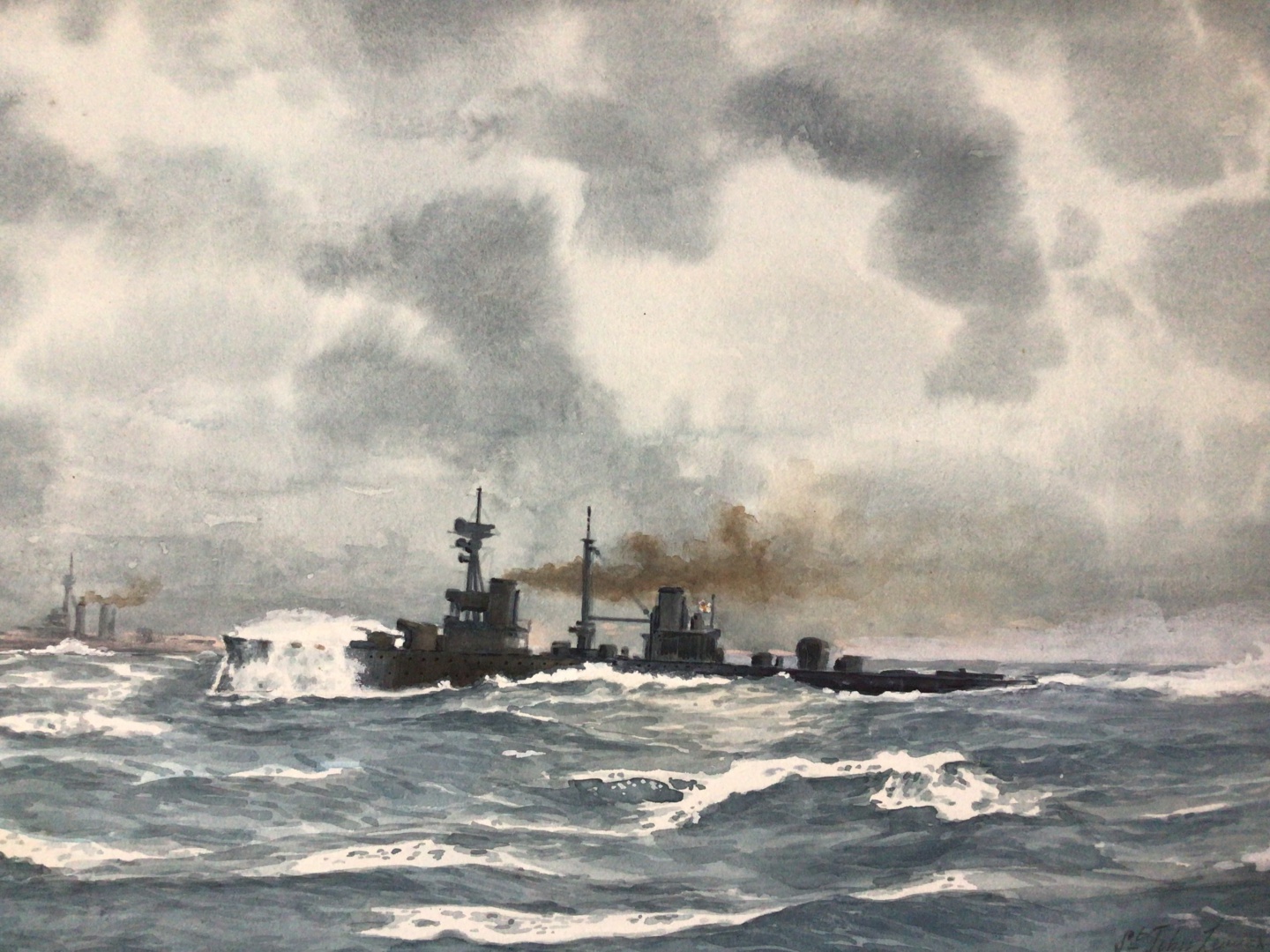Battleship HMS AGINCOURT in a lively sea
. watercolour signed (LR) St John Lennox Holme.
9 x 13 ins (23 x 33 cms ) approx
£450
HMS AGINCOURT is a rare bird indeed! When first completed in August 1914 no other ship in the world could equal her for her aggressively magnificent appearance. Carrying the largest number of heavy guns of any other warship afloat and the heaviest secondary armament too, she had the curious distinction of belonging to three different countries during 12 months, Brazil, Turkey and finally Great Britain who, on the cusp of war, commandeered her whilst she was fitting out and christened her AGINCOURT, a name apparently much promoted by Mr Churchill, the First Lord of the Admiralty. Turkey was furious and some consider that her "theft" contributed to her entering the war on the German side. But the battleship was indeed a most impressive acquisition for the Royal Navy which made only a few modification to their new prize before hoisting the white ensign. The unforseen short notice requirement to man her caused, we understand, problems in the Admiralty such that most of the crew of the Royal Yacht (now laid up for the war) including both her captain and commander were sent to her along with many inmates from RN Detention Quarters: an interesting combination of "talents"!
Fourteen 12 inch guns were mounted in 7 turrets (quickly named by Jolly Jack after the days of the week rather than the usual A,B,Y etc) and Monday, Tuesday Wednesday etc they remained for the rest of her life. She participated in the Battle of Jutland and although she was in action only for a short time she took the opportunity to fire full 14 gun salvoes. We read that the resulting sheets of flame resembled, to anxious onlookers, a battle cruiser blowing up - of which unfortunately there were a few examples that day.
She could knock up a respectable 22.5 knots on sea trials and her 670 foot long hull and large beam made her a very good seaboat and steady gun platform. She was considered to be a comfortable ship to live in - albeit you were surrounded by an arsenal of magazines - and all enjoyed her idiosyncracies stemming from her mixed-up parenthood. A knowledge of Portugese was useful when trying to operate bathroom and heads fittings and the wardroom china with its Turkish inscriptions amused the officers! She went into Reserve soon after the end of hostilities and thereafter the breaker's yard, Brazil having declined to take her on. This watercolour shows her in the period 1916-1918 when her former tripod mainmast had been removed and before new batteries of searchlights were fitted around the after funnel.
